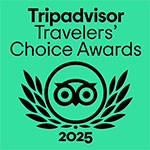Mera Peak Climbing is one of the best peak climbing adventures in Nepal. It takes you to the Everest region of the Himalayas where you will trek through a less-trodden trail in the region before climbing the mountain.
The Mera Peak Climbing experience is an unparalleled adventure that gives you the thrill of mountain climbing adventure.
Mera Peak Climbing Highlights
- A carefully planned route that provides the best acclimatization
- Stunning Himalayan scenery
- highly experienced Himalaya Heart leader and Sherpa trek crew.
- Lodge accommodation is on the trail, with two nights camping at Mera Peak.
- Unsurpassed mountain views from the summit
Why not come and challenge yourself with Mera Peak Climbing, Nepal’s highest trekking peak, and enjoy some outstanding beauty along the way?
Mera Peak (6,476 m/21,210 ft) is not a technically demanding peak but takes a long time to reach to the summit. This 21-day trek and climb has 16 days of actual trekking and 2 days of peak climbing.
This Journey for Climbing Mera Peak takes us through the virgin forest of the stunning Hinku Valley. The valley is incredibly beautiful, and the trekking route provides excellent acclimatization for the Mera Peak summit itself.
It is a tough "push" to the summit, but the rewards are there to be seen. From the summit, the views are truly surreal across a vast stretch of the Himalayas. Five 8,000-meter peaks are clearly visible from the summit, including Everest, Lhotse, Cho Oyu, Makalu, and Kanchenjunga.
Check our other climbing trips in the region like Island Peak, or Lobuche Peak.
Why Himalaya Heart for Mera Peak Climbing?
Himalaya Heart Treks organized its first climbing trip to Mera Peak in 2006, and since then we have led many successful trips every year. Our itinerary is carefully designed with a steady ascent and a separate day set aside in Khare to allow plenty of time for acclimatization before the climb to come.
Mera Peak Climbing is an excellent option for anyone who is fit and has a moderate degree of mountaineering experience. It is a challenge mainly due to its elevation, but the technical mountaineering skills required are minimal. You do need stamina and fitness to attempt this Mera Peak Climbing, and some idea of climbing would be useful but not essential.
Our seasoned Sherpa mountain guides provide us with basic mountaineering training before the actual summit. The best time for attempting Mera Peak Climbing is during the spring and autumn seasons, when the skies are generally clear.








 USD 2480
USD 2480

